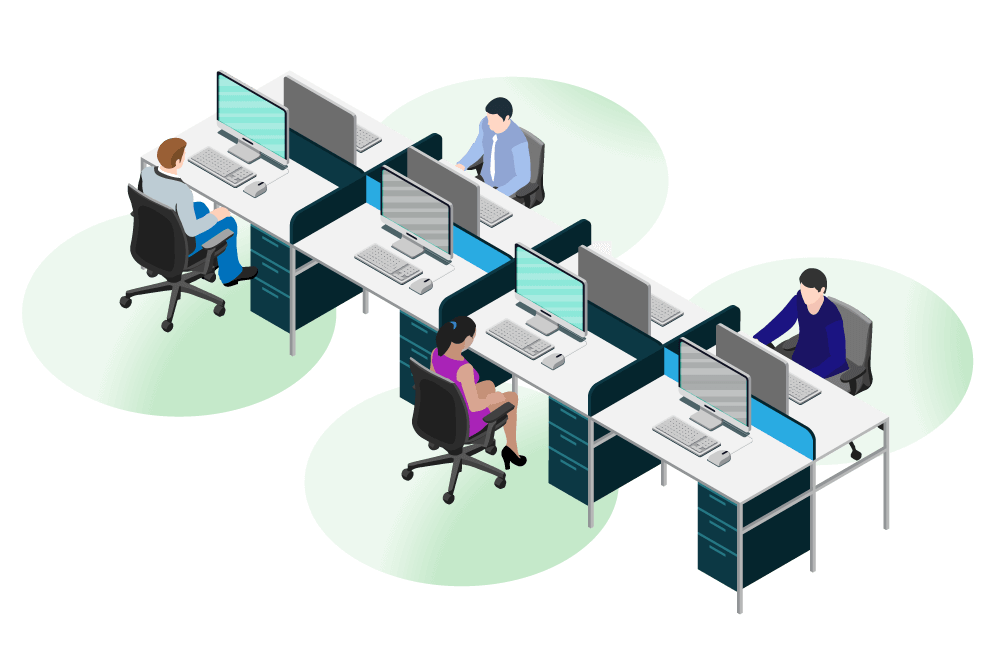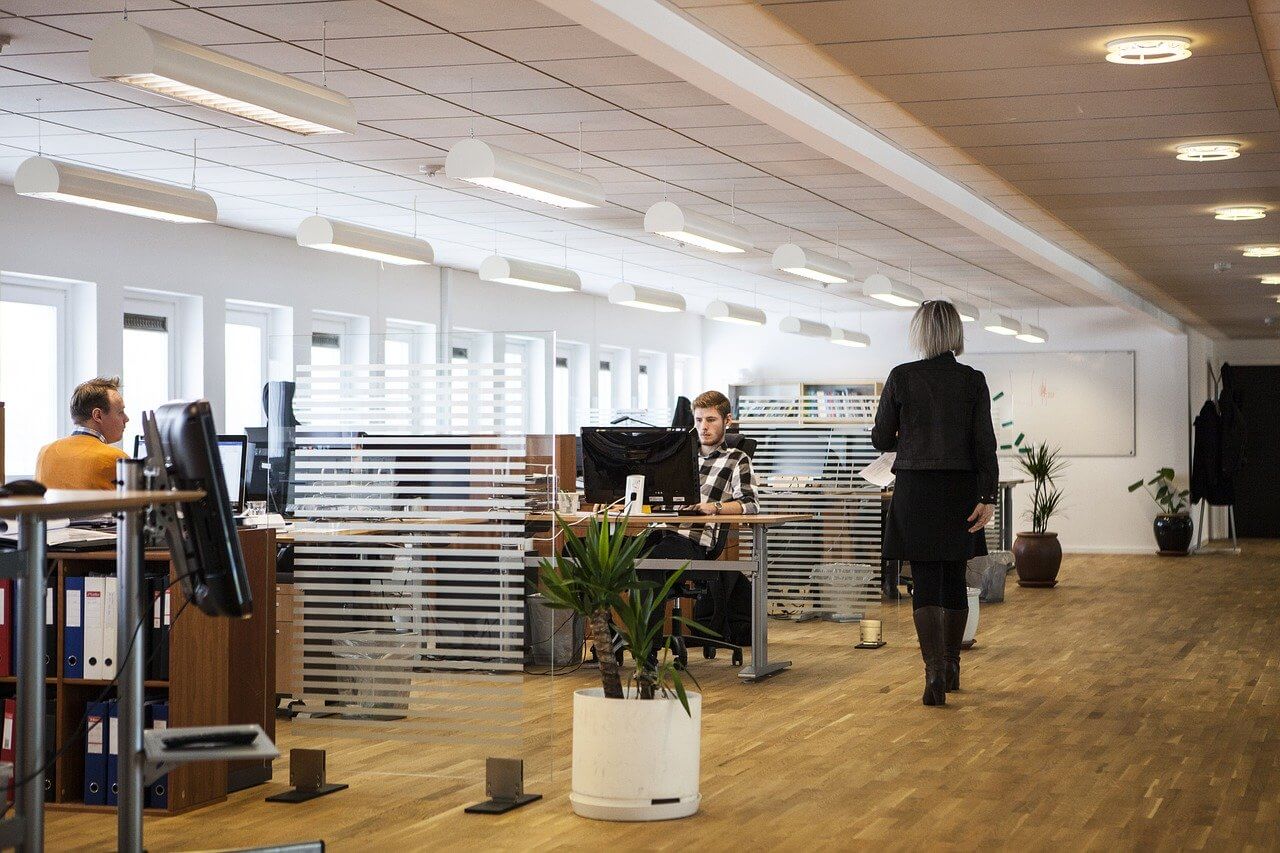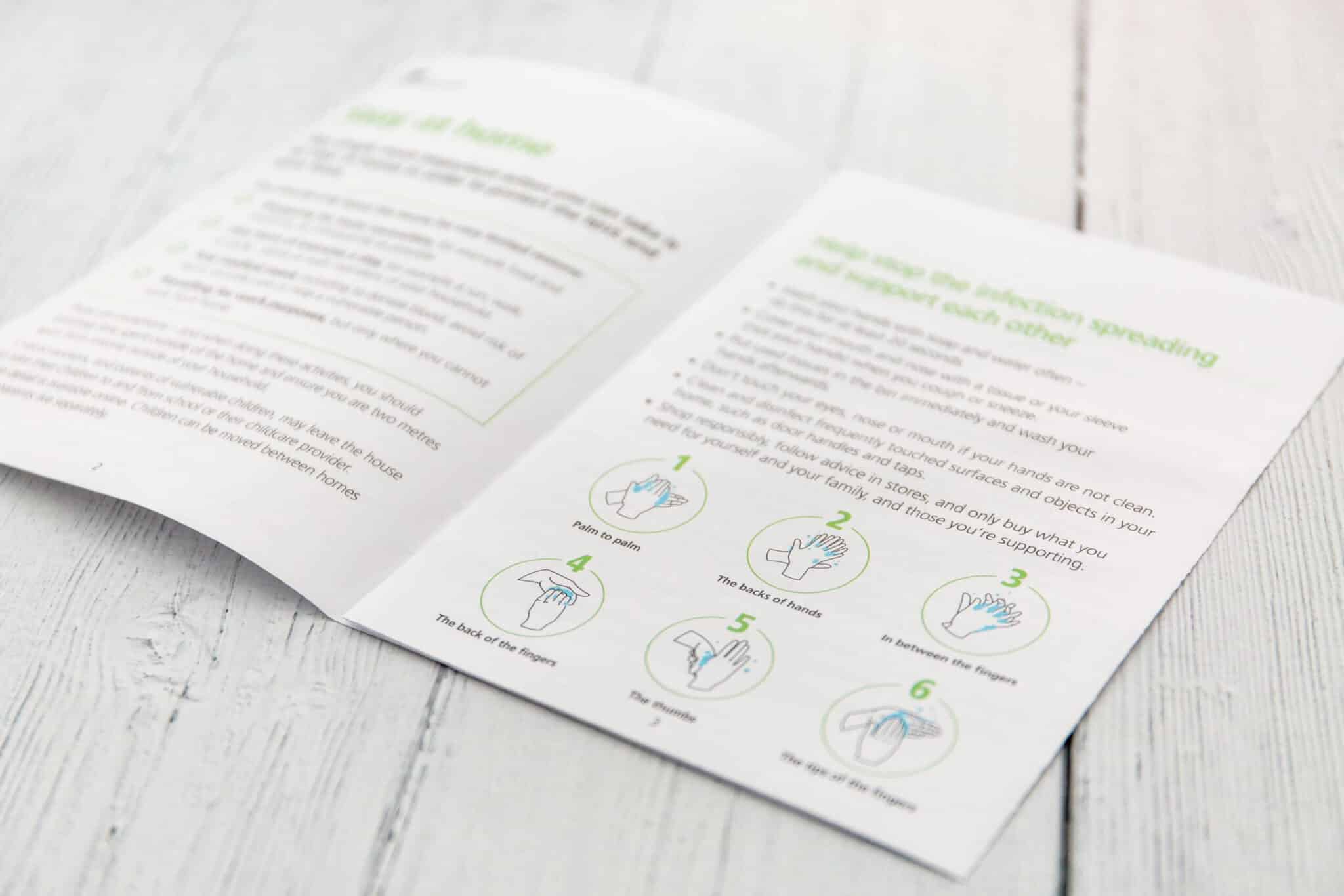Working in shifts is one office reopening method that’s been popular among many companies.
But what’s the best way to leverage shift work?
In this article, we’re taking a look at how your company can best utilize shift schedules to mitigate the spread of COVID-19 in the office, as well as how to structure your office based on this method.
What is shift work?
Shift work in this context means dividing employees into groups where one group works in the office while the other works from home. For example, employees in Group A could work in the office on the first and third weeks of the month, while employees in Group B could work from home. Then, during the second and fourth weeks of the month, Group B would work in the office, and Group A would work from home.
Working in shifts is a preferred workstyle due to several reasons:
- It reduces the number of people working in the office at once
- It helps the cleaning team ensure they’re attending to each area that needs extra cleaning
- It mitigates overwhelm for employees who may be nervous about going back to the office to work
- It makes it easier to practice physical distancing in the office
Companies are finding that alternating shifts is safer for all employees as the uncertainty of COVID-19 continues well into 2020.

Structuring the office with shift work
When it comes to planning your office reconfigure, leading with employee shift schedules is a great way to make sure the company is following health and safety guidelines. By limiting the number of people in the office, you can determine seating arrangements, cleaning schedules, and other essential parts of your reopening plan.
Let’s take a look at this in more detail.
Employee seating
To determine how you should divide your employees into alternating shifts, consider your seating capabilities as per instructions from health organizations like the Centers for Disease Control and Prevention (CDC).
Since the CDC recommends that people remain at least six feet apart from one another, make sure your seating arrangement reflects that standard. Although this is the standard radius, some companies may choose to use eight feet as a radius around employees.
To ensure accuracy, be sure to measure how far apart each desk is from one another. Remember, it’s not only important to make sure the desks are far enough apart, but that people are able to walk by them without breaking the six feet minimum barrier.
A distancing planner tool can help you determine your minimum viable capacity for your office based on desks and shared spaces. Tools like these take your existing floor plan and recommend a new seating plan based on your reduced occupancy count. To put it simply, if you have 100 seats on your floor plan, you might only be able to use 50 at a time.

Employee schedules
Now, based on how many employees you know you can safely have in the office at a time, you can determine their shift schedules. There are many ways to set employee shift schedules. It boils down to your capabilities and what makes sense for employees.
Let’s say, for example, you decide to divide your employees into two shifts, A and B:
- Shift A comes into the office during the first and third weeks of the month
- Shift B comes into the office during the second and fourth weeks of the month
Or you could have them switch off by the day instead of the week:
- Shift A works in the office Monday, Wednesday, and every other Friday
- Shift B works in the office Tuesday, Thursday, and every other Friday
No matter how you decide to break up employees, the fewer people in the office at once, the better. It may be helpful to separate departments into different shifts in case one employee gets sick—that way, an entire department isn’t wiped out. Employee schedules could also help with physical distancing if you originally had employees sitting by the department.
If you aren’t sure what would be best for employees in terms of working in shifts of weeks or days, ask them! Send out a quick poll and see what schedule employees prefer most. Some may like that they will work at a dedicated desk for the entire week over a handful of days at a time, and vice versa.

How can facility managers roll out an alternating shift work plan?
There’s no one “right” way to create a shift work plan for your company. However, there are several things to consider when determining the best course of action for your employees’ health and wellbeing.
Let’s take a look at the most important things to consider in this case.
Launch a communications strategy
A strong communications strategy will ensure your plan is disclosed entirely to employees.
When creating your communications plan, keep these things in mind:
- Be transparent. Employees are getting all the information they need to be safe and to keep others safe.
- Make it accessible. Employees can access documents/refer back to them when needed.
- Make it streamlined. Messages that overwhelm employees can get lost in translation. Be sure to simplify not only your words but how you choose to share those messages.
Also, it’s important to make yourself and the rest of the facilities team available to answer questions and address concerns. A significant part of healthy communication is not only being clear in what you say to employees but to be willing to listen to employees as well. Because this plan impacts the health and safety of all employees, it shouldn’t be created in an echo chamber. The more feedback you get from employees, the better you can make the plan.

Create a cleaning schedule
The health and safety of your employees is your top priority when transitioning back into the office. Setting a cleaning schedule that ensures the right spaces are thoroughly cleaned after employee activity is vital to slowing the spread of the virus.
Depending on how your office is configured, maybe your cleaning staff only cleans the areas that employees are in every day. Or, if it makes sense for your company, perhaps your cleaning staff thoroughly cleans the entire office.
No matter what you decide, make this cleaning schedule transparent with both the cleaning staff and your employees. A log can give employees peace of mind as they work in the office. A log can also help the cleaning staff ensure they cover each area that you need to be cleaned.

Leverage office technology
If your company has been using office technology like sensors and facility management software, it could come in handy when planning your alternating shift work plan.
Facility management software and tools like a visual directory can come in handy during your office reopening planning. Visual directories allow employees to see where their desk is for the time they’ll spend in the office. This is helpful in case of things like seating changes and giving employees peace of mind knowing where they’ll sit all day or week.
Facility management software can also help the cleaning team verify they’ve cleaned each desk or space an employee has used.
Sensor technology can be a highly-impactful system to add to your reopening plan. Sensors can be used to help ensure employees are adhering to your company’s reopening plan, including:
- Confirm that the right employees are at the right desk at the right time
- Detect if employees are too close
- Adopt no-touch solutions for high-touch spaces, like doorknobs, paper towels, and more
Sensors can be the eyes of the office and make sure everyone is where they’re supposed to be when the office is open. Also, sensors can help the facilities team adapt as things change with the coronavirus and with your company as a whole.
This level of flexibility is needed during this ever-evolving time, so equipping your company with the right tools is an essential part of a successful office reopening.

Plan, but be flexible
Working in shifts could mean the difference between a chaotic office reopen and one that is stress-free and health-conscious.
Once you determine how many employees you can (and should) have in your office at a time, you can start to plan the rest of your reopening. Keep in mind that as new information becomes available regarding the virus and how things change within your organization, be flexible with your plan. Things that were working when you first reopened might not be sufficient or may need adjusting.
How has your company planned to reopen the physical office? Leave a comment below or send us a tweet.
Photos: StartupStockPhotos, louisehoffmann83, OSS




